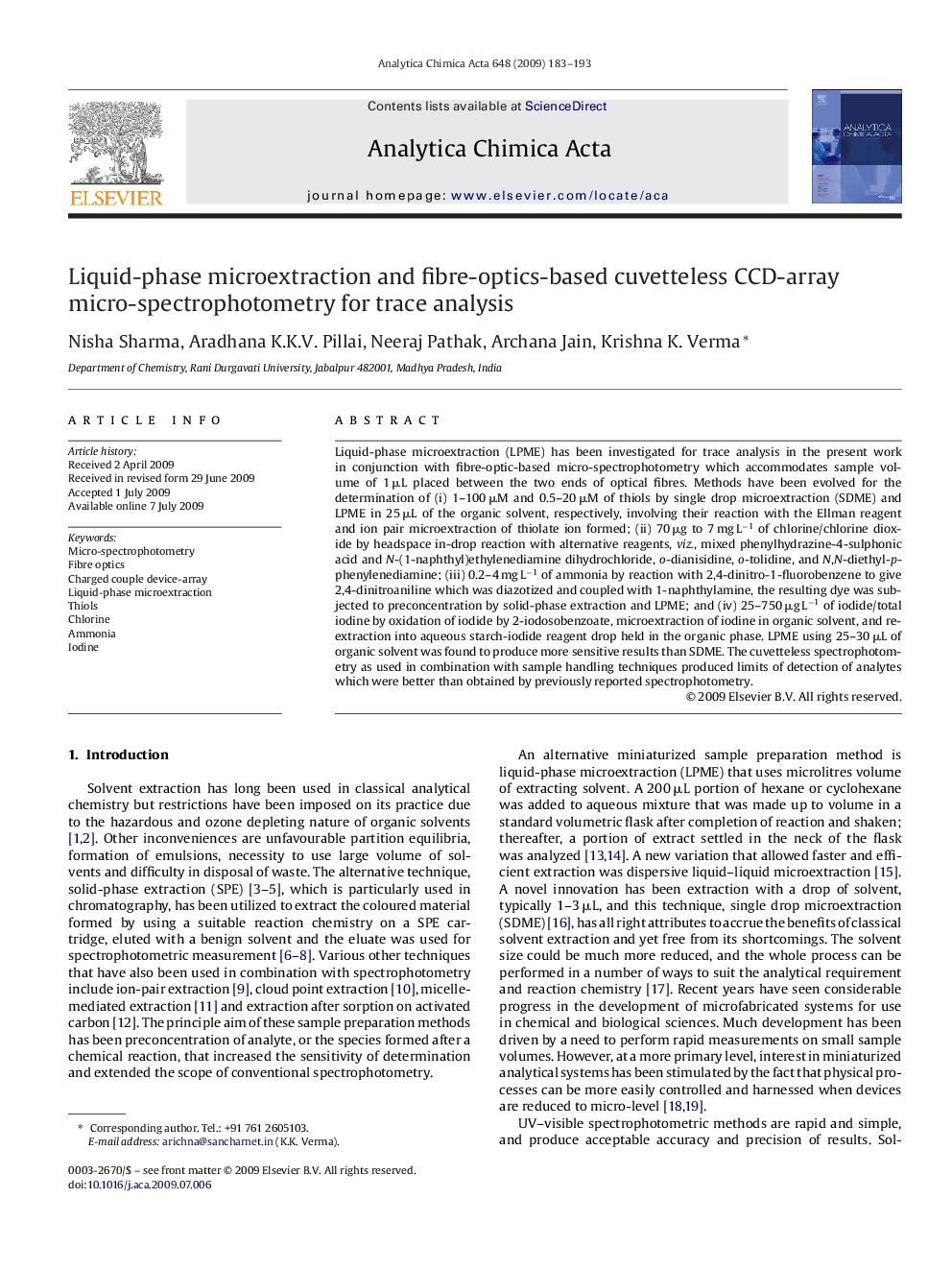| Article ID | Journal | Published Year | Pages | File Type |
|---|---|---|---|---|
| 1168457 | Analytica Chimica Acta | 2009 | 11 Pages |
Liquid-phase microextraction (LPME) has been investigated for trace analysis in the present work in conjunction with fibre-optic-based micro-spectrophotometry which accommodates sample volume of 1 μL placed between the two ends of optical fibres. Methods have been evolved for the determination of (i) 1–100 μM and 0.5–20 μM of thiols by single drop microextraction (SDME) and LPME in 25 μL of the organic solvent, respectively, involving their reaction with the Ellman reagent and ion pair microextraction of thiolate ion formed; (ii) 70 μg to 7 mg L−1 of chlorine/chlorine dioxide by headspace in-drop reaction with alternative reagents, viz., mixed phenylhydrazine-4-sulphonic acid and N-(1-naphthyl)ethylenediamine dihydrochloride, o-dianisidine, o-tolidine, and N,N-diethyl-p-phenylenediamine; (iii) 0.2–4 mg L−1 of ammonia by reaction with 2,4-dinitro-1-fluorobenzene to give 2,4-dinitroaniline which was diazotized and coupled with 1-naphthylamine, the resulting dye was subjected to preconcentration by solid-phase extraction and LPME; and (iv) 25–750 μg L−1 of iodide/total iodine by oxidation of iodide by 2-iodosobenzoate, microextraction of iodine in organic solvent, and re-extraction into aqueous starch-iodide reagent drop held in the organic phase. LPME using 25–30 μL of organic solvent was found to produce more sensitive results than SDME. The cuvetteless spectrophotometry as used in combination with sample handling techniques produced limits of detection of analytes which were better than obtained by previously reported spectrophotometry.
